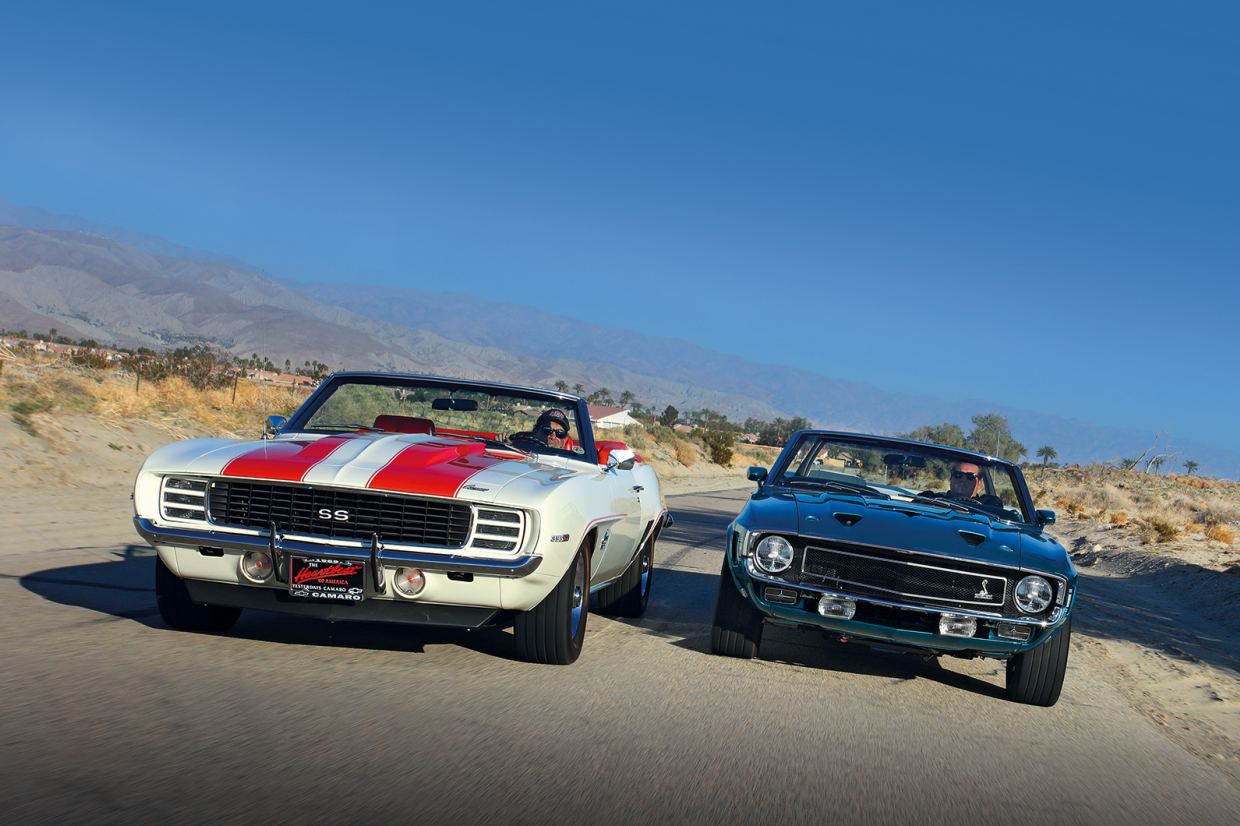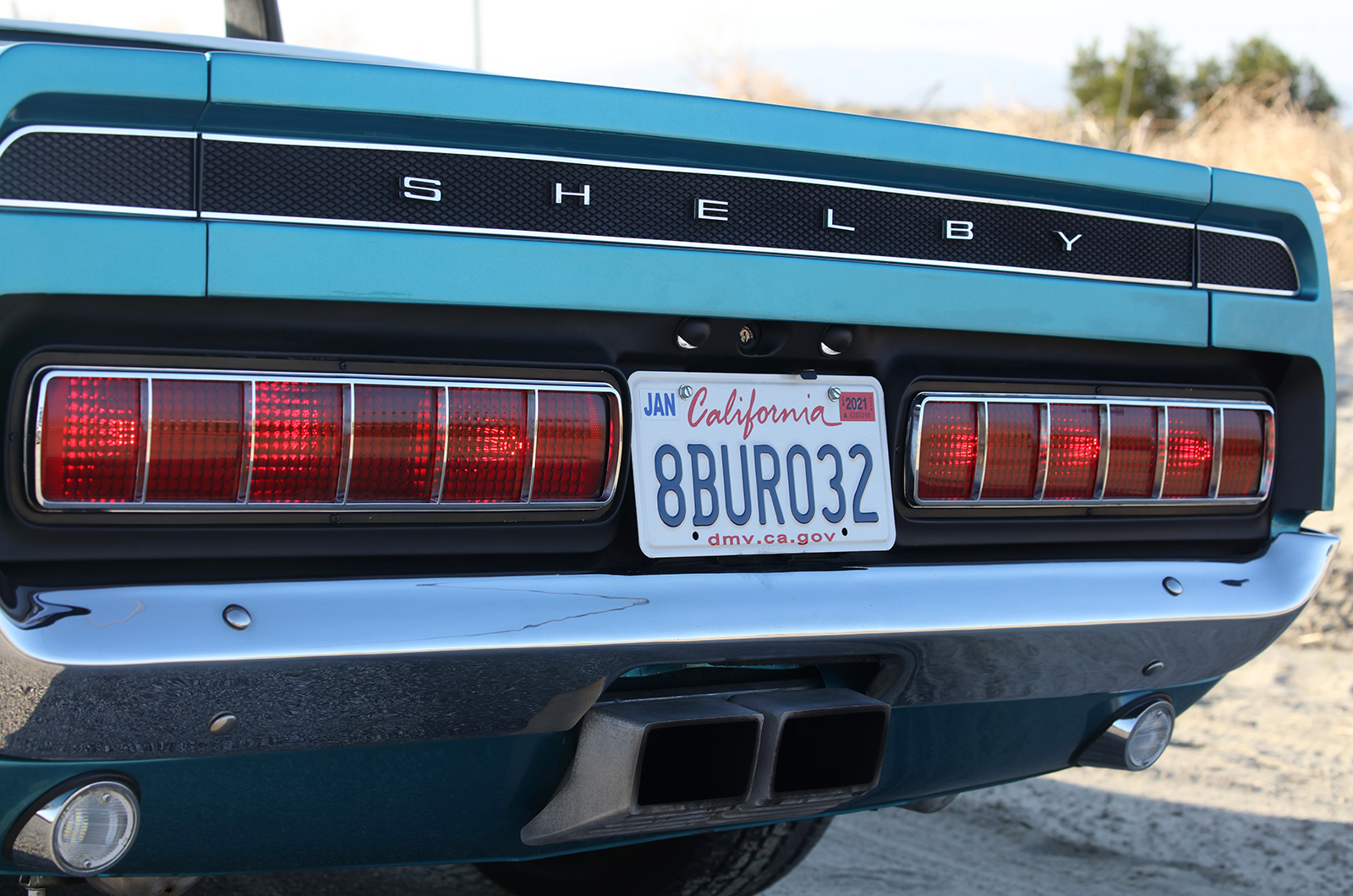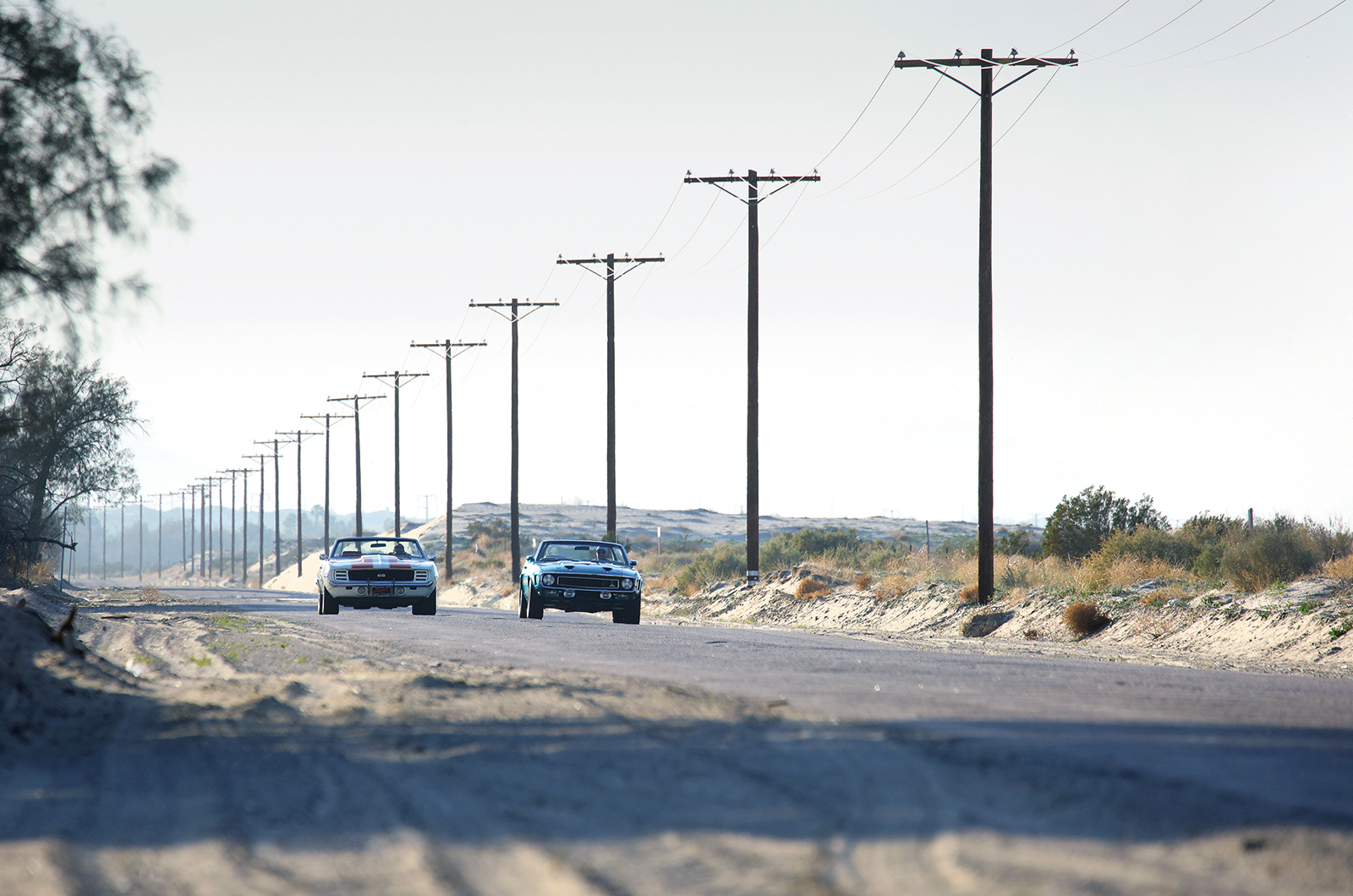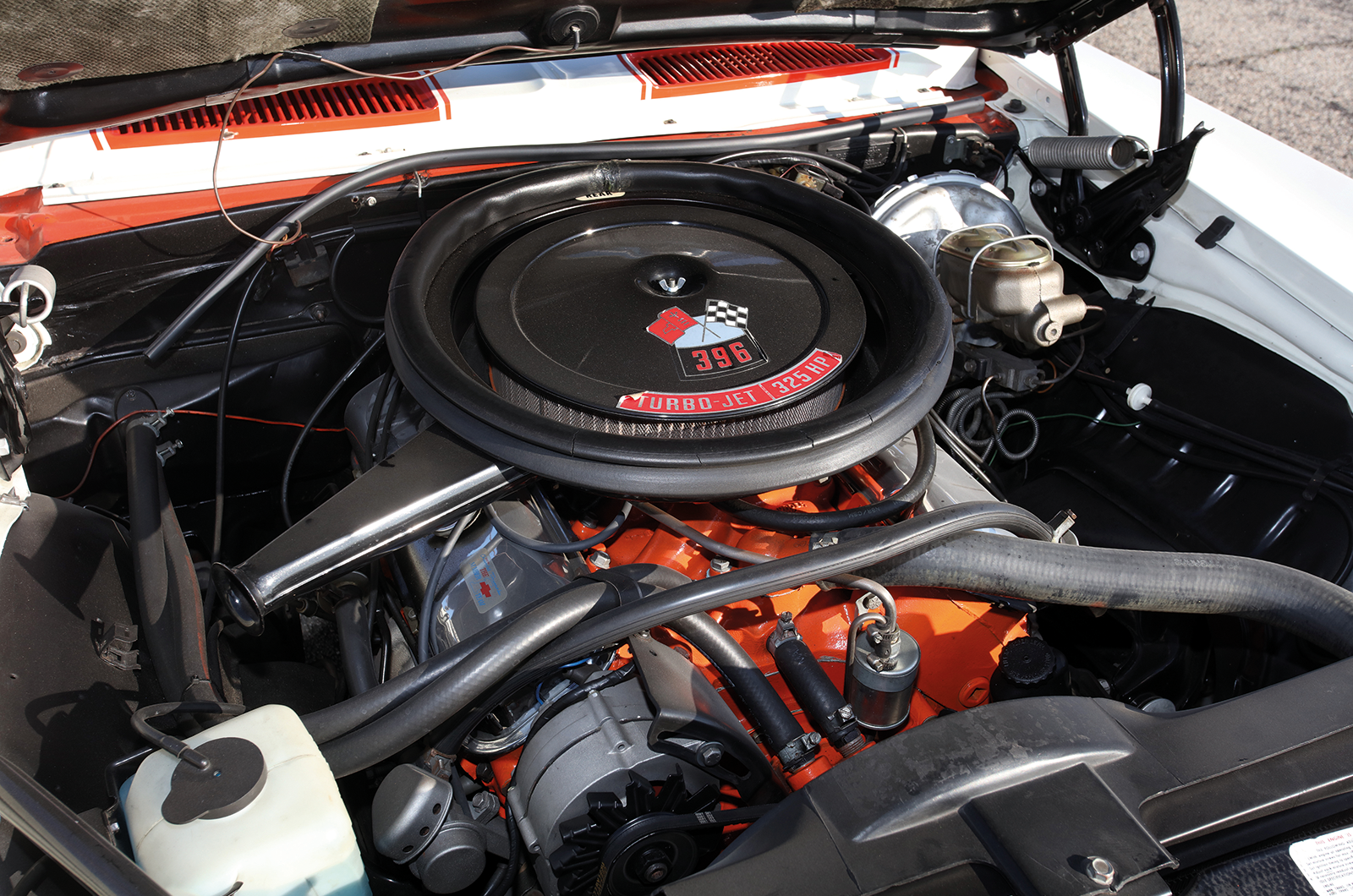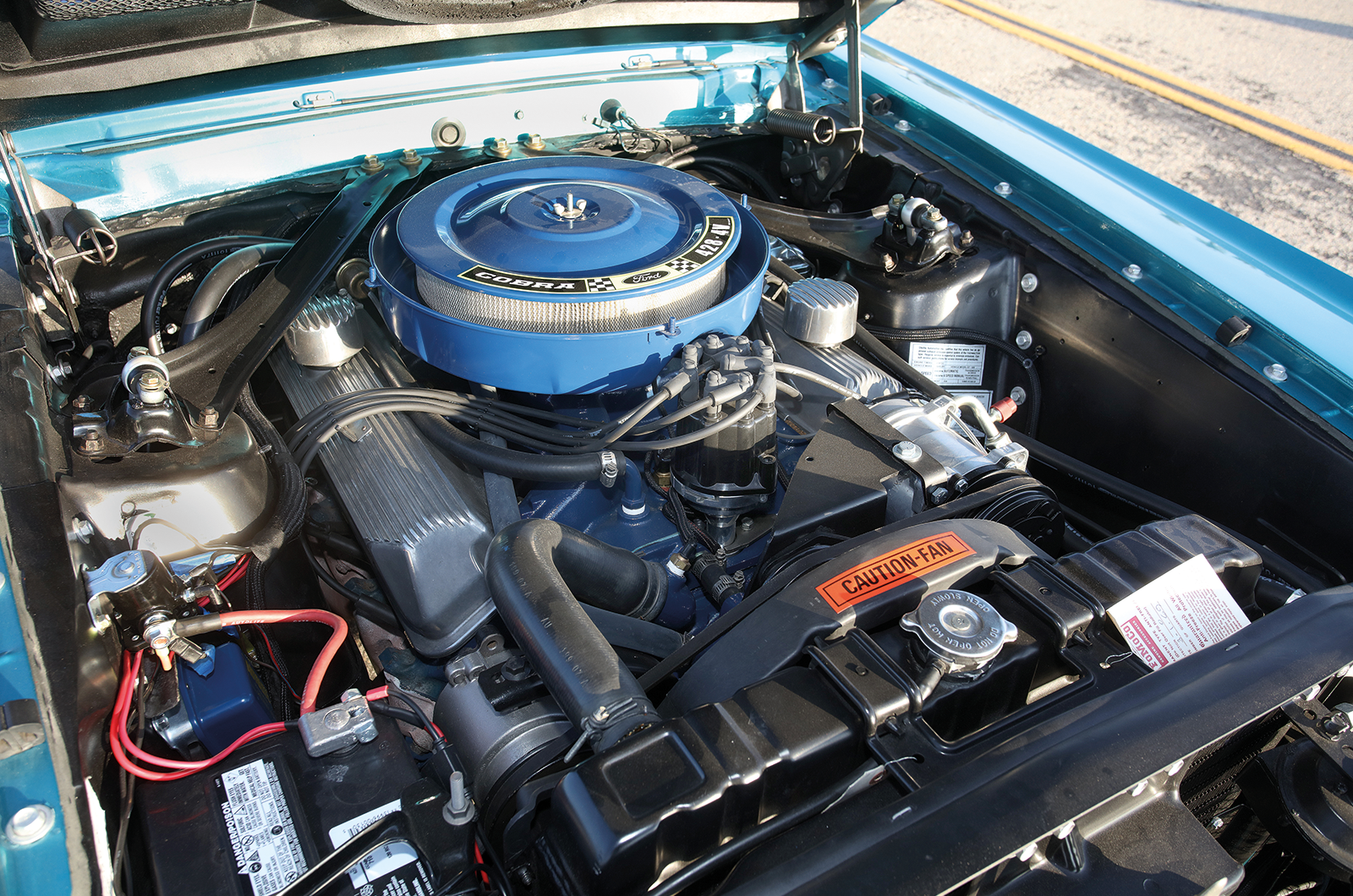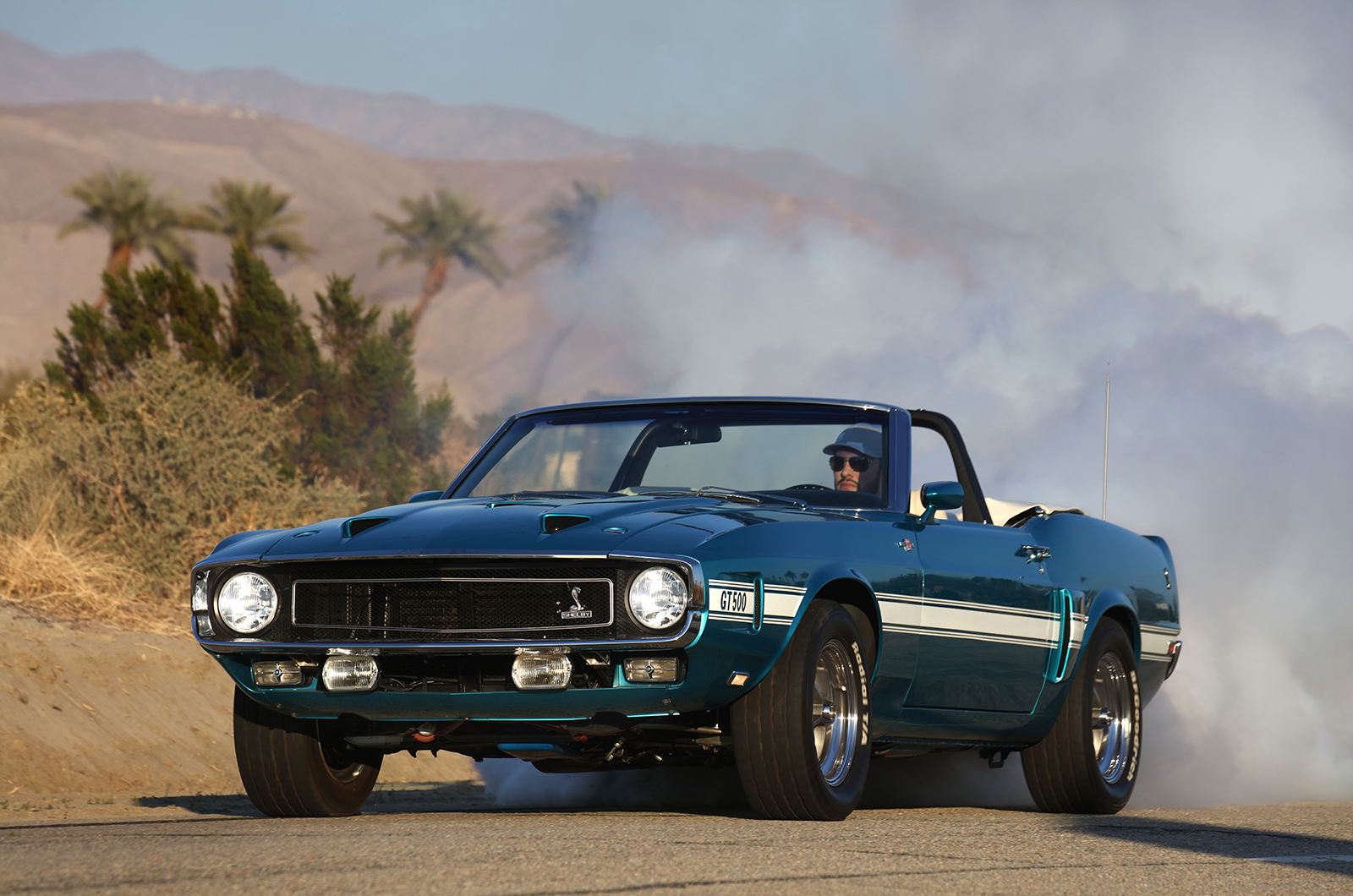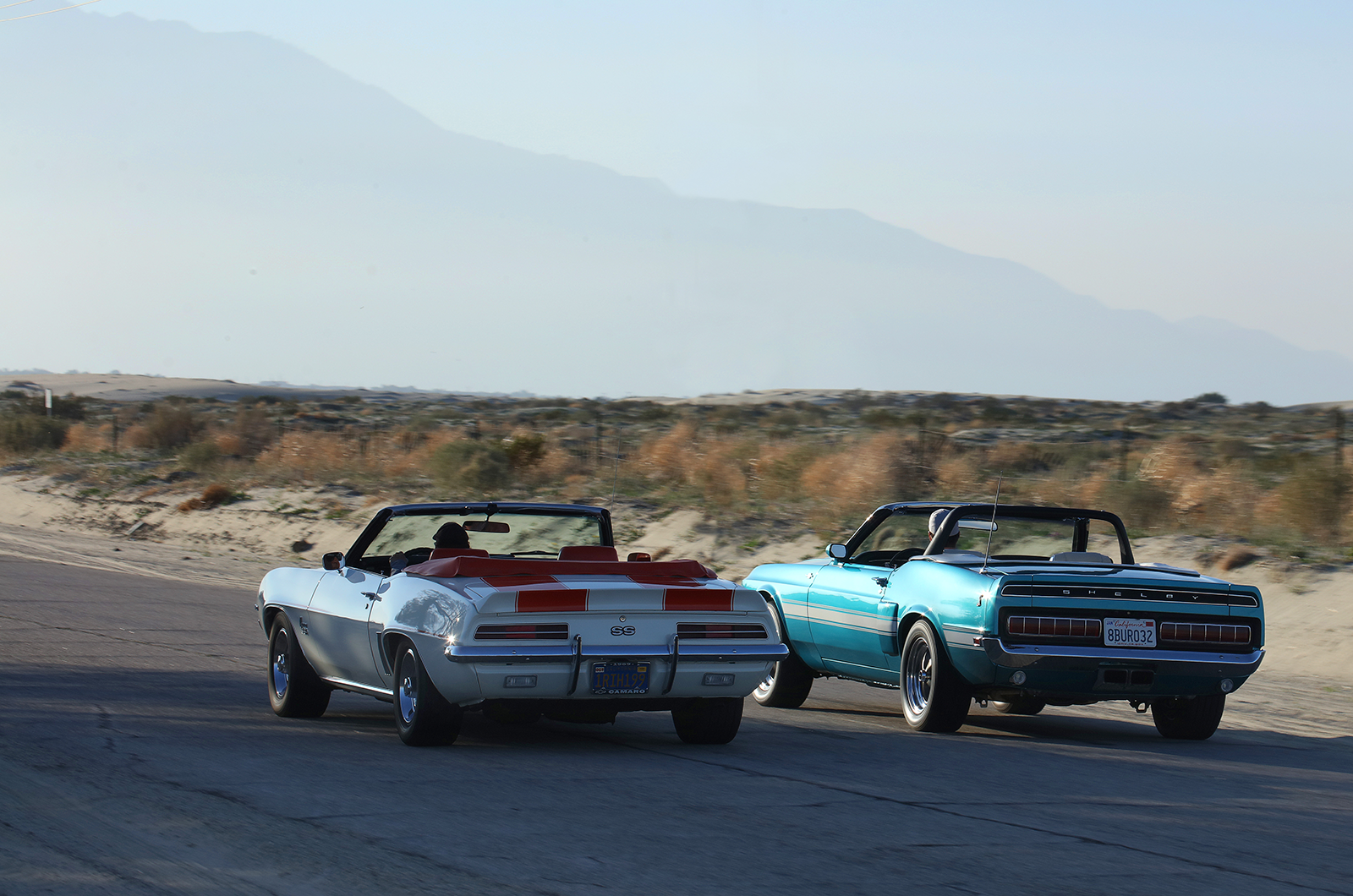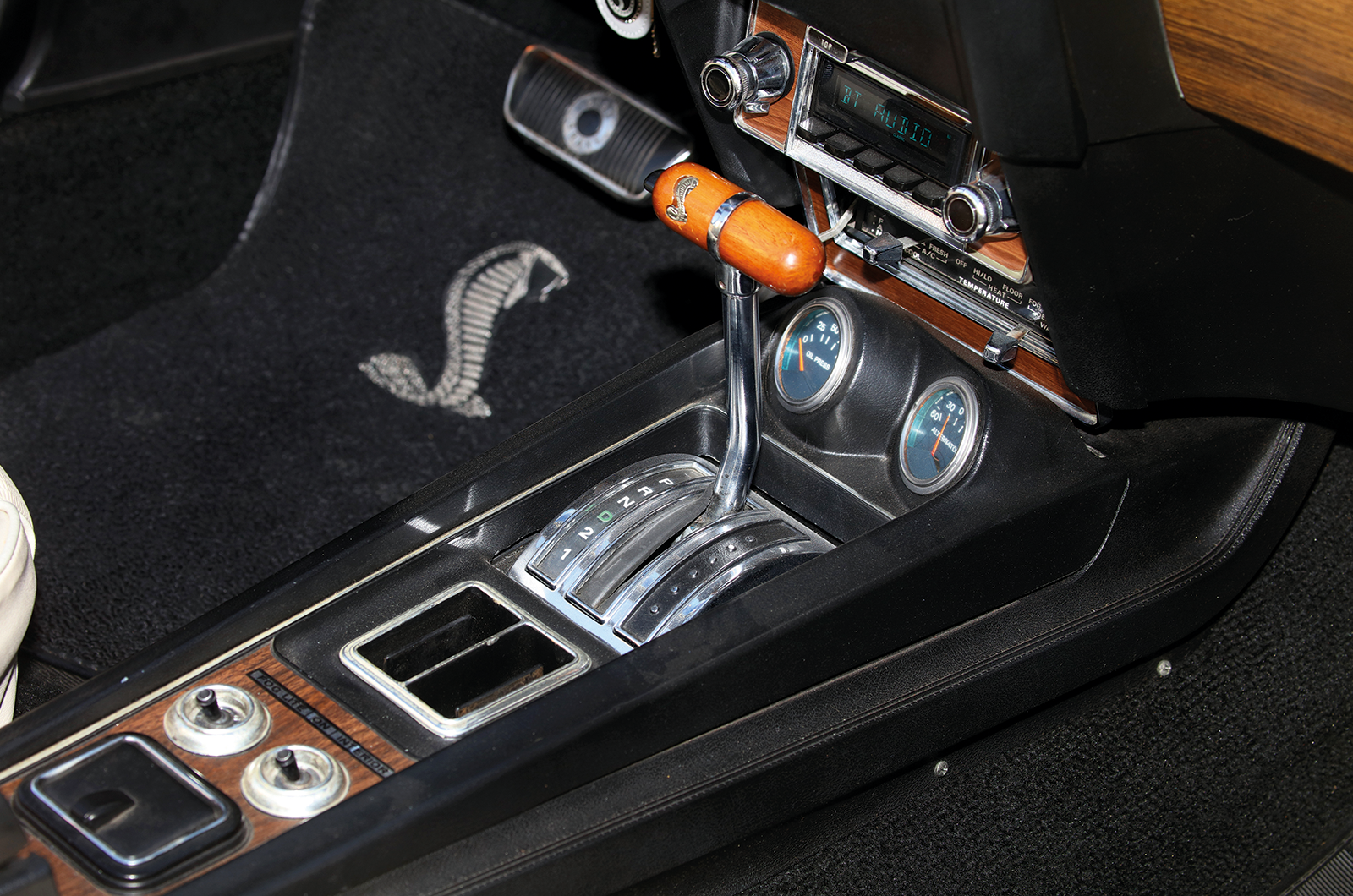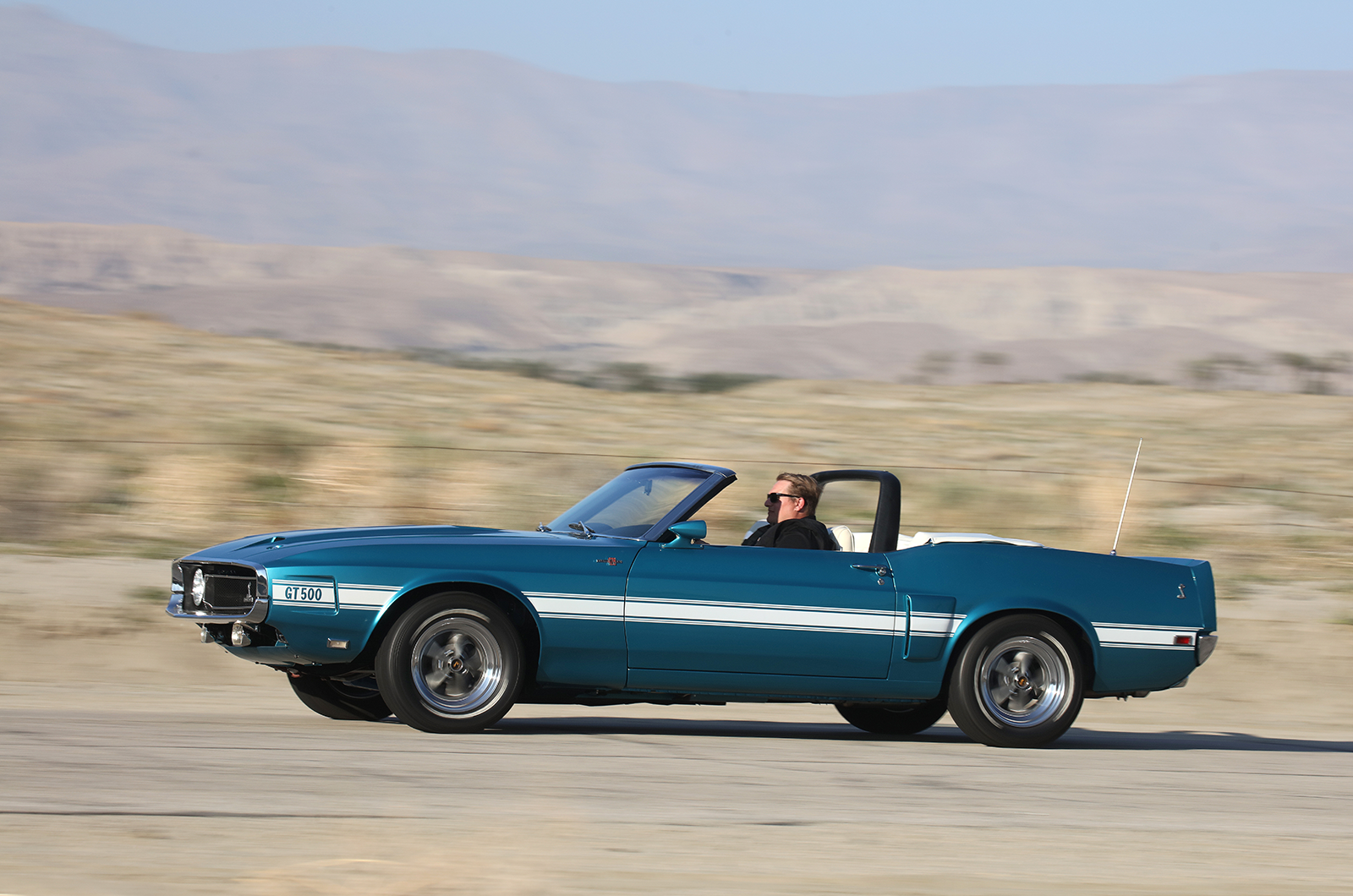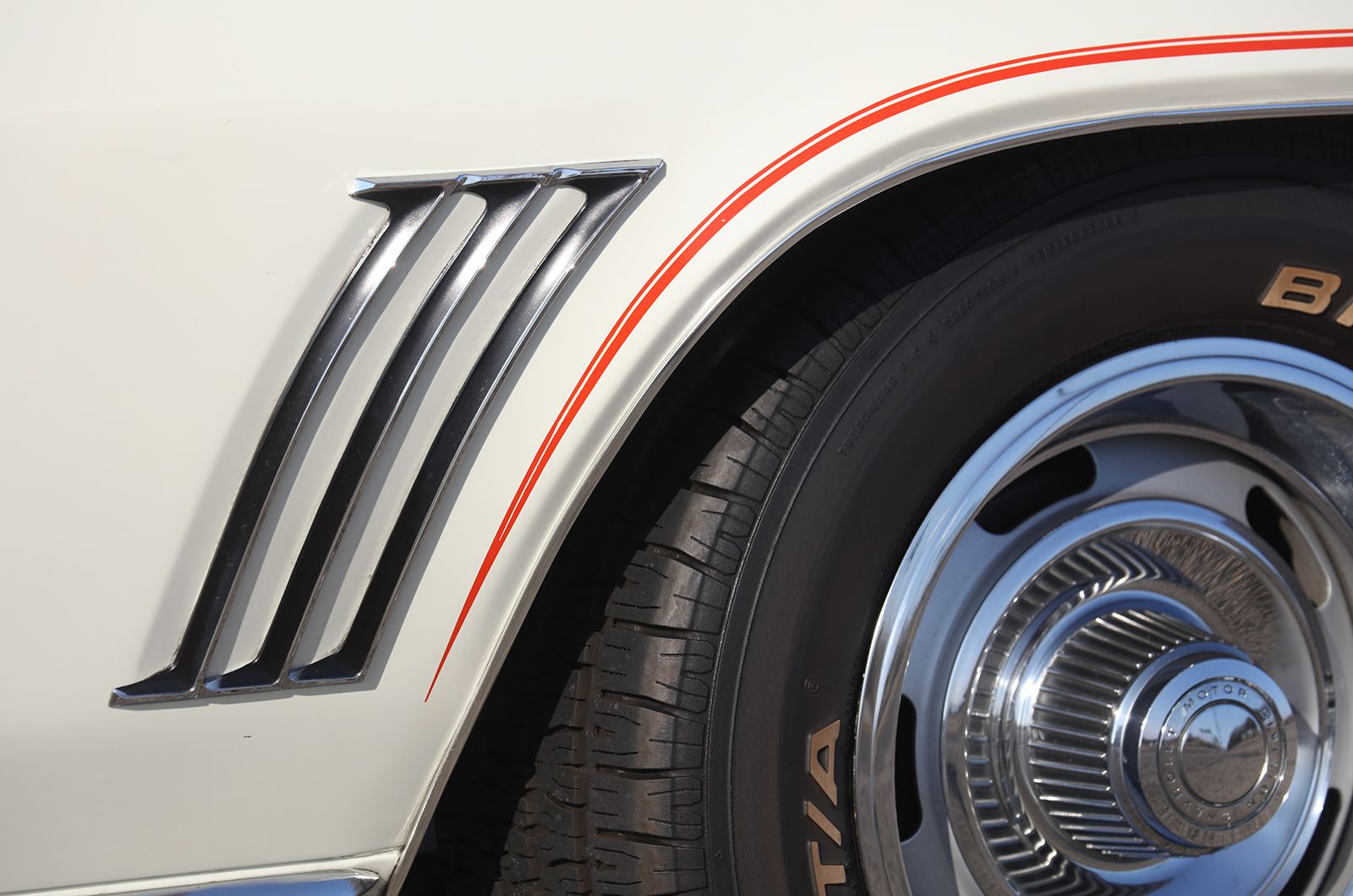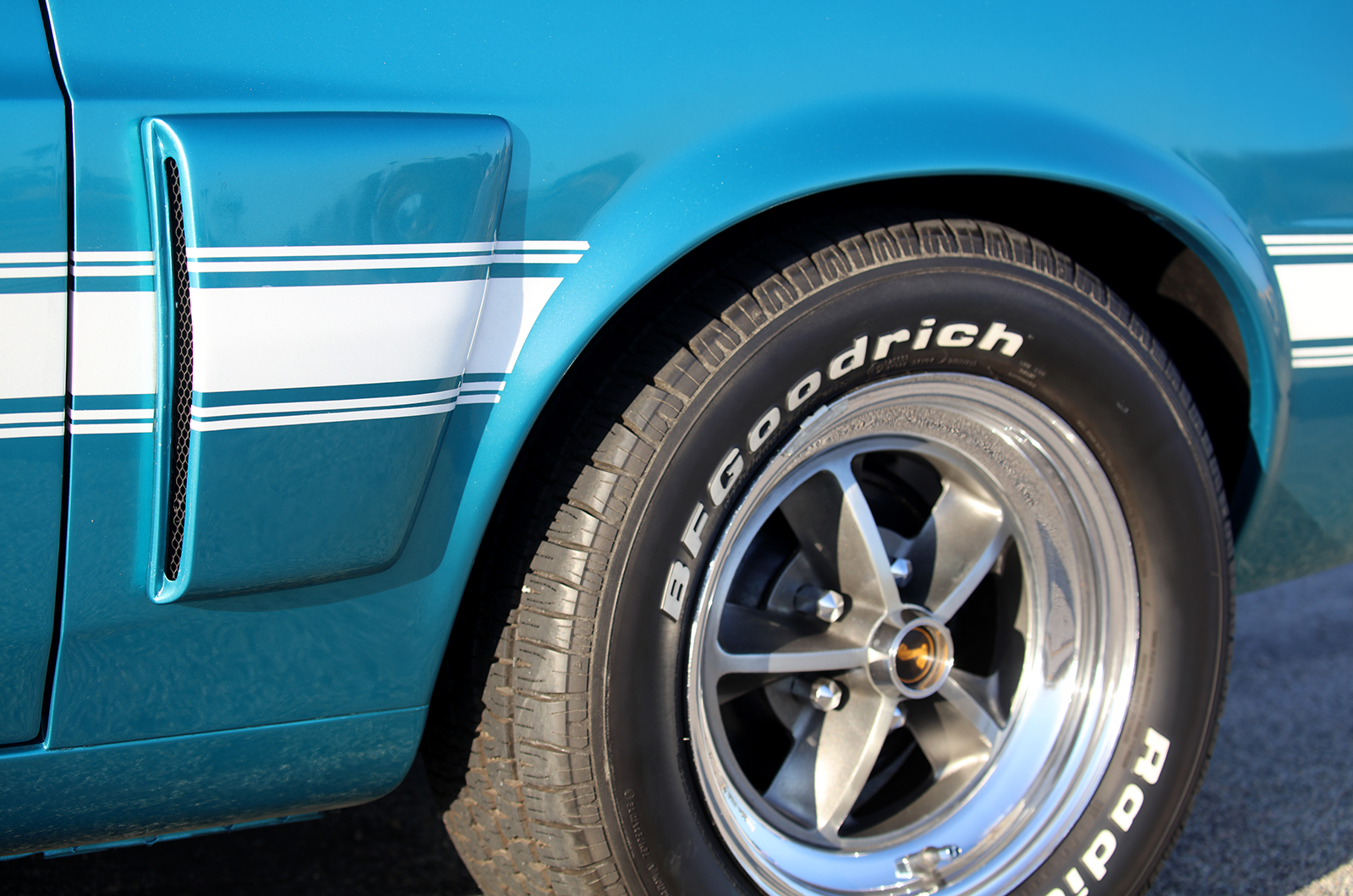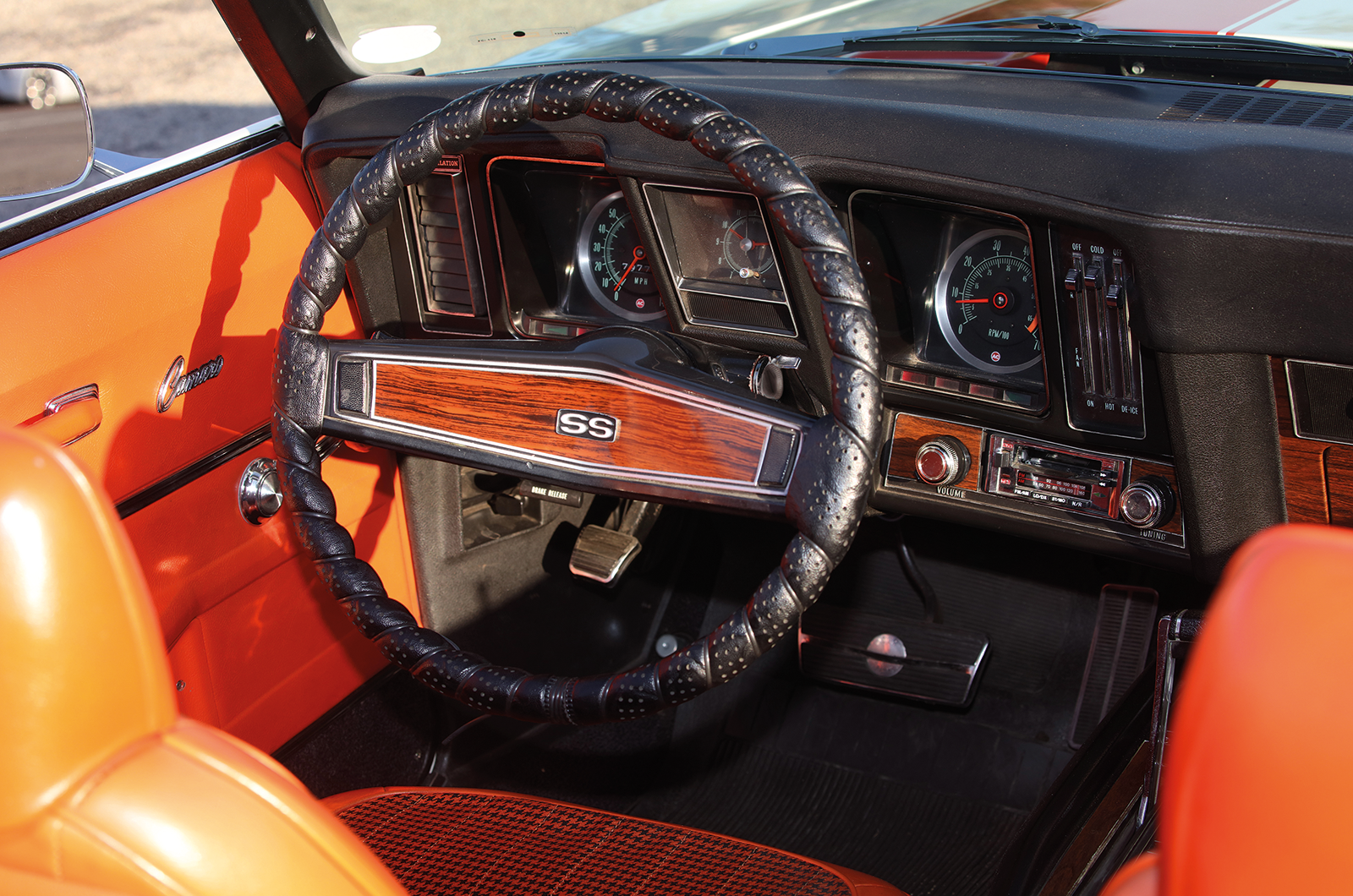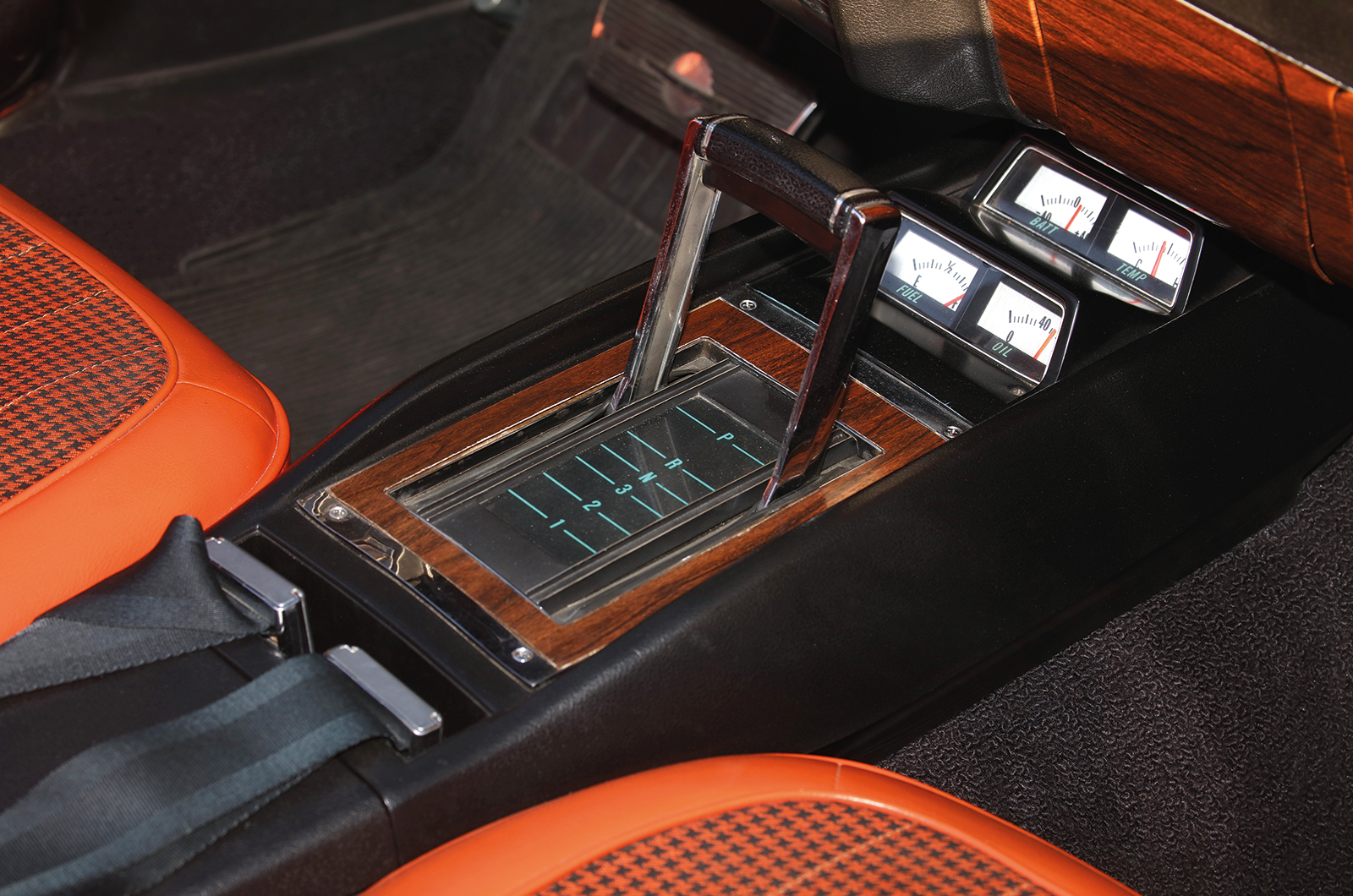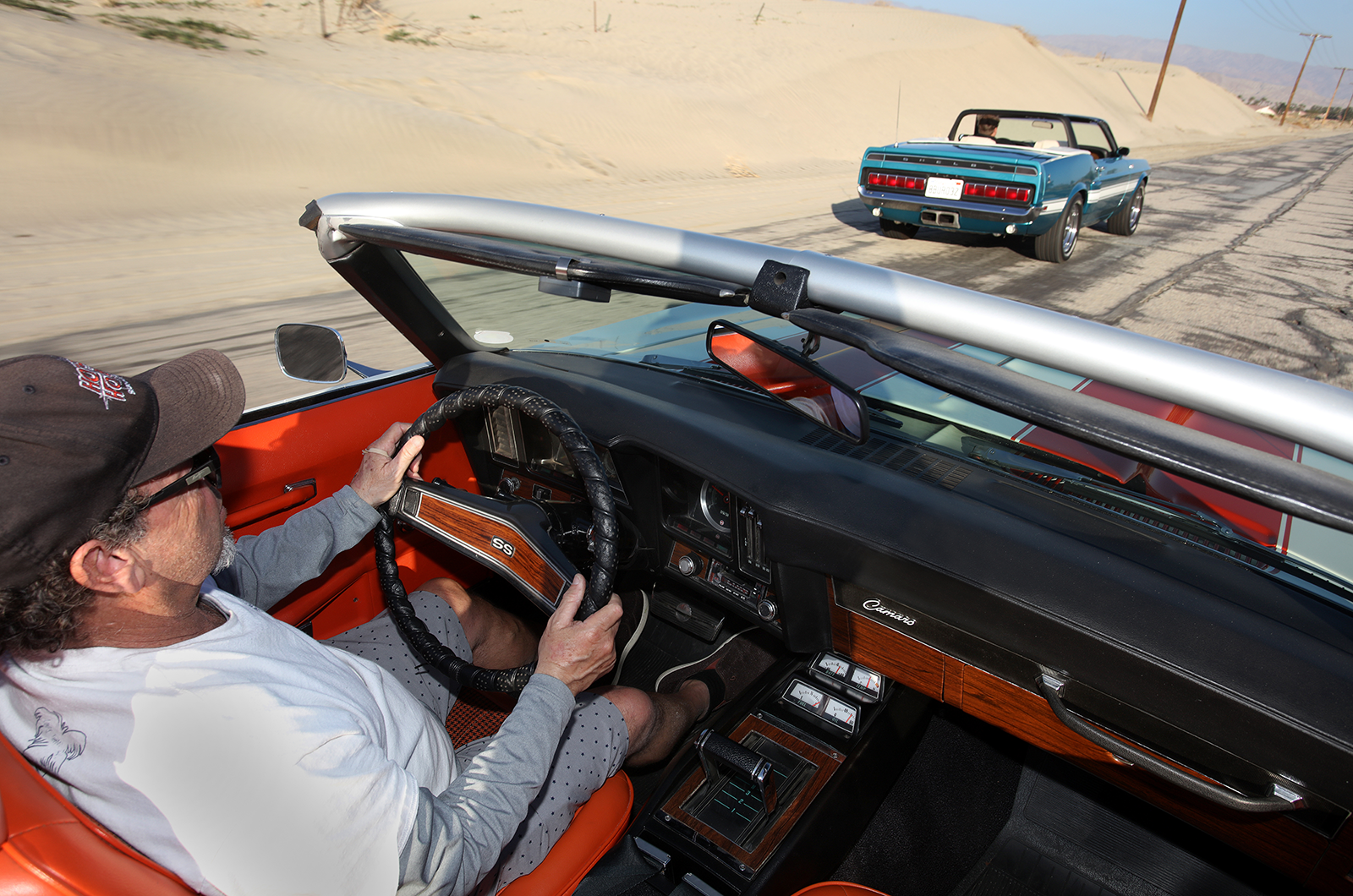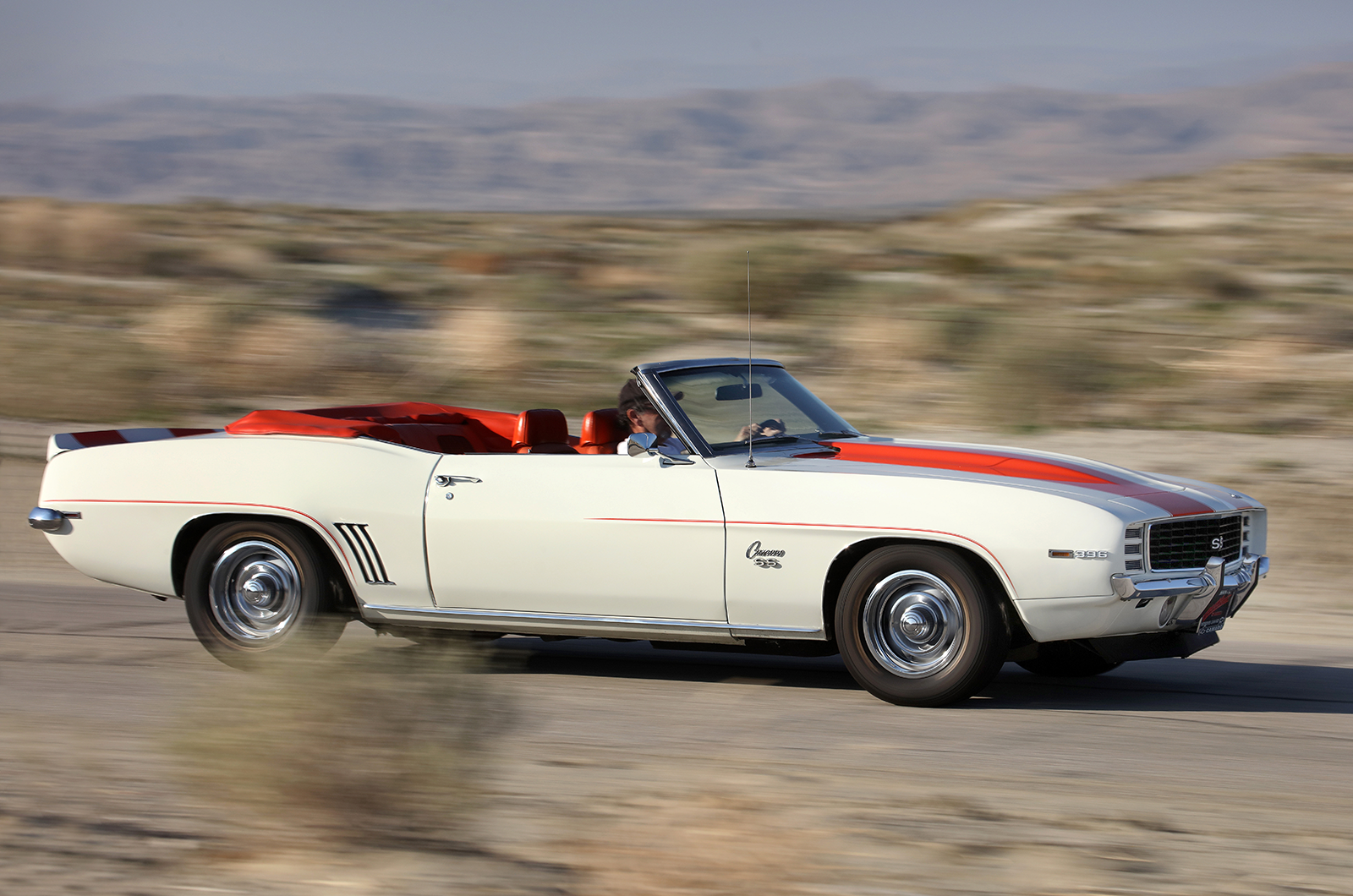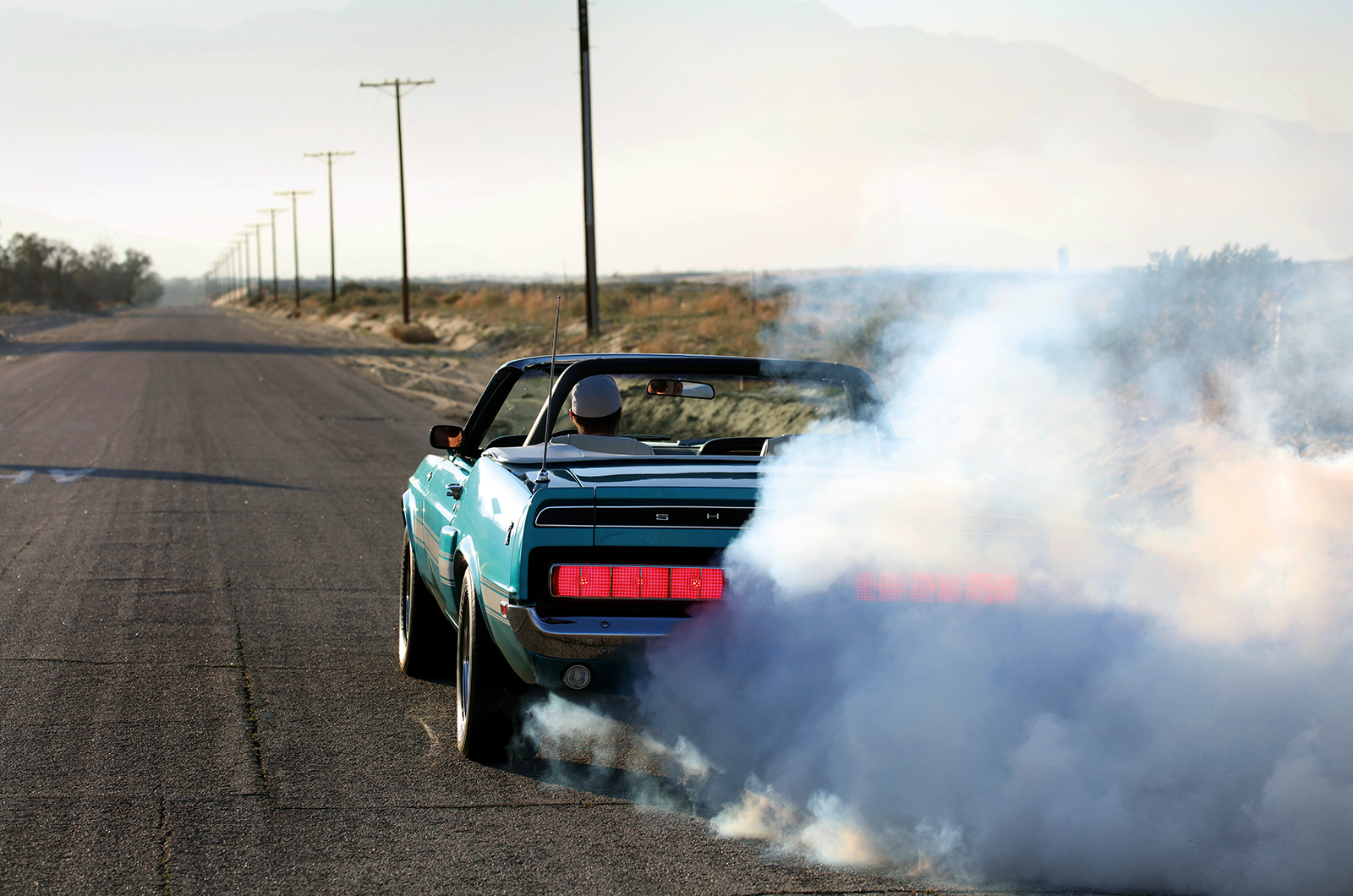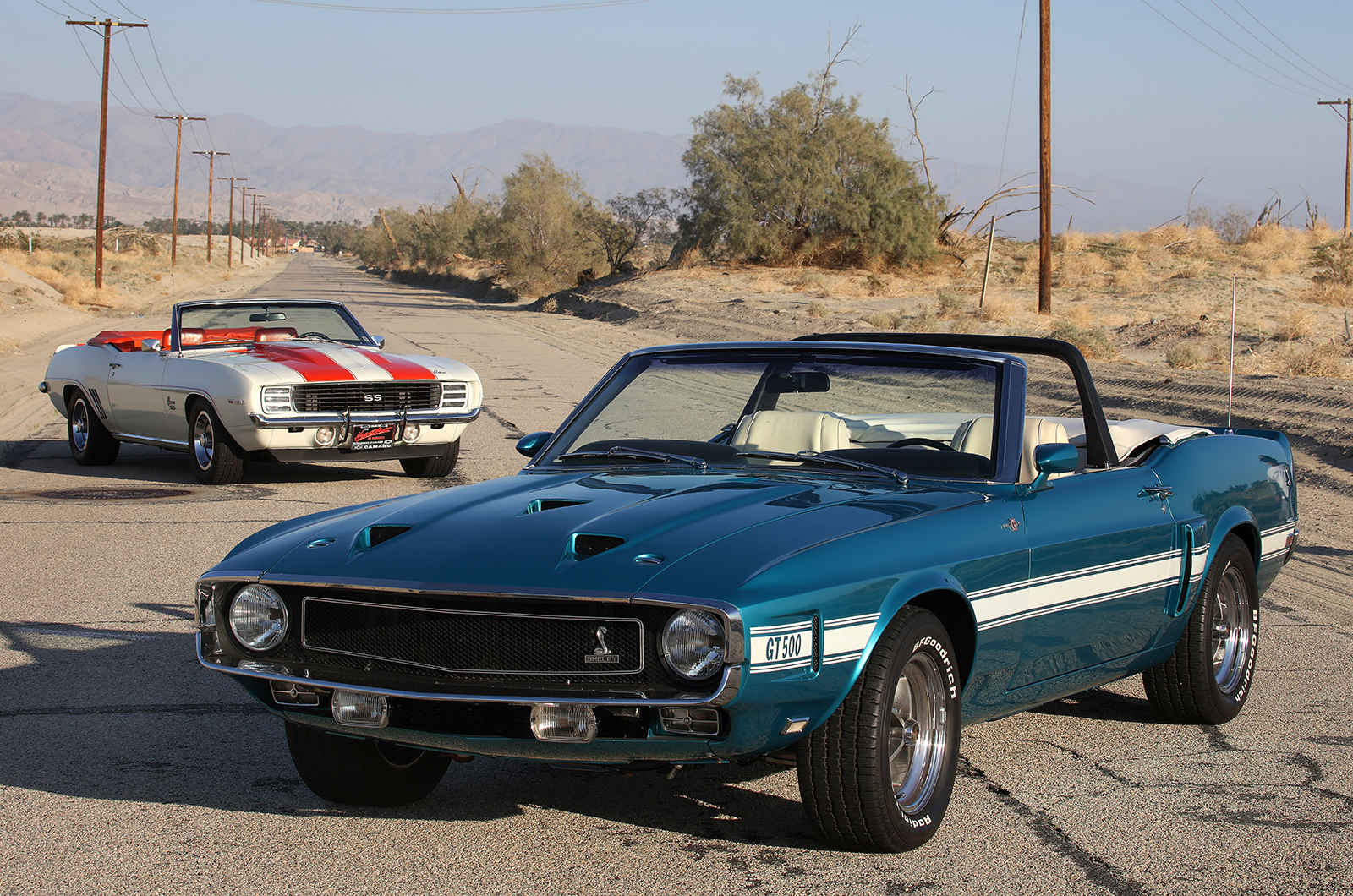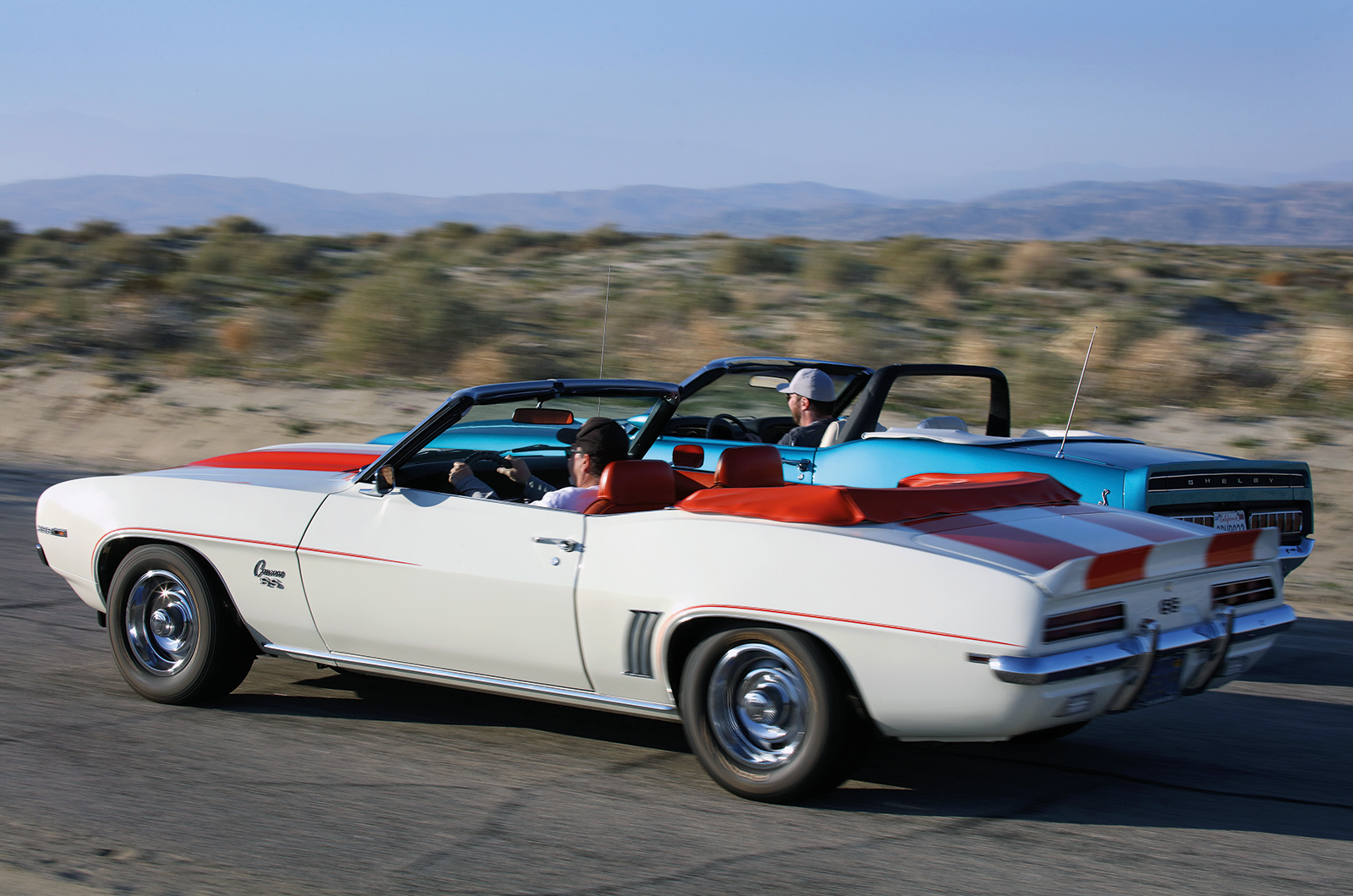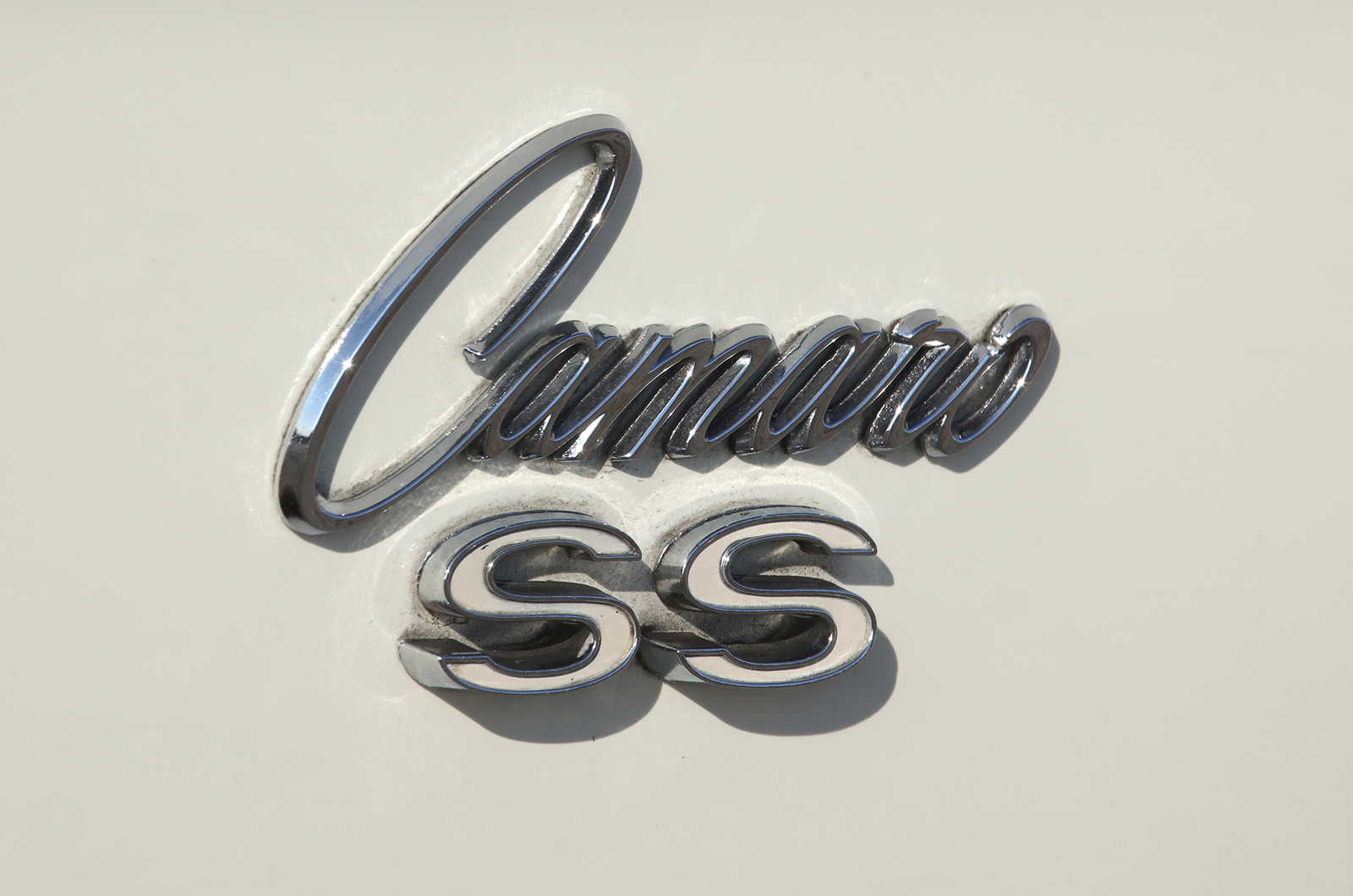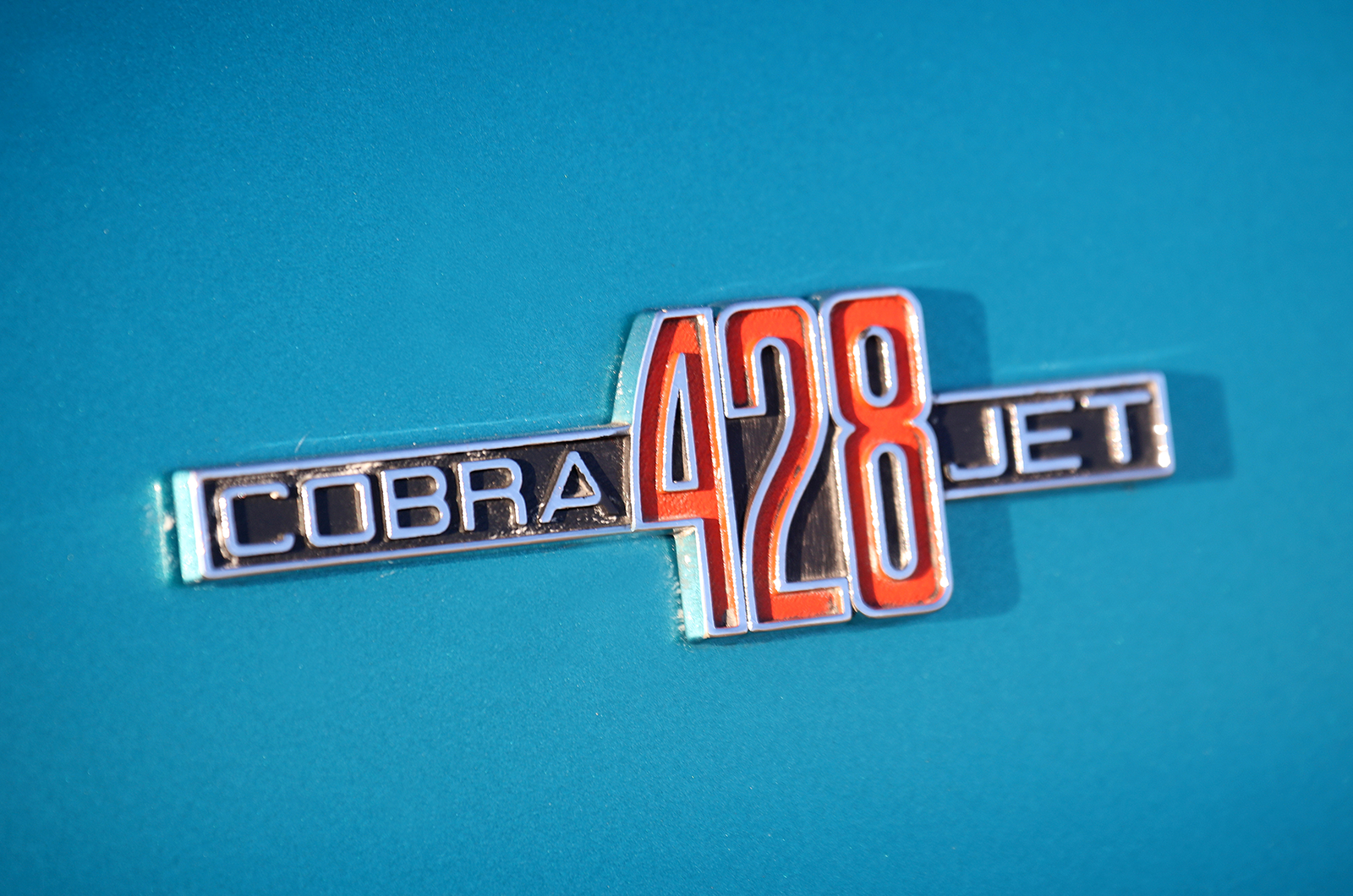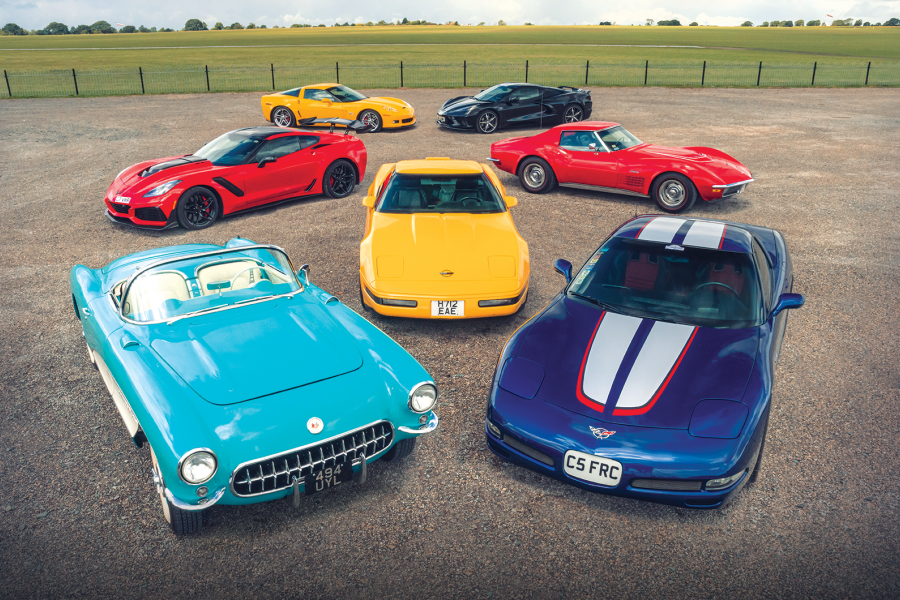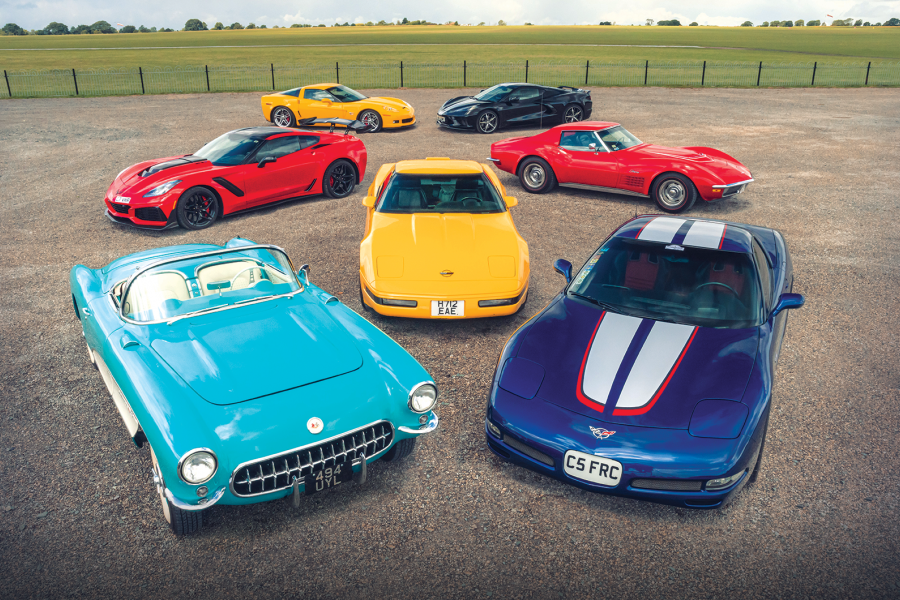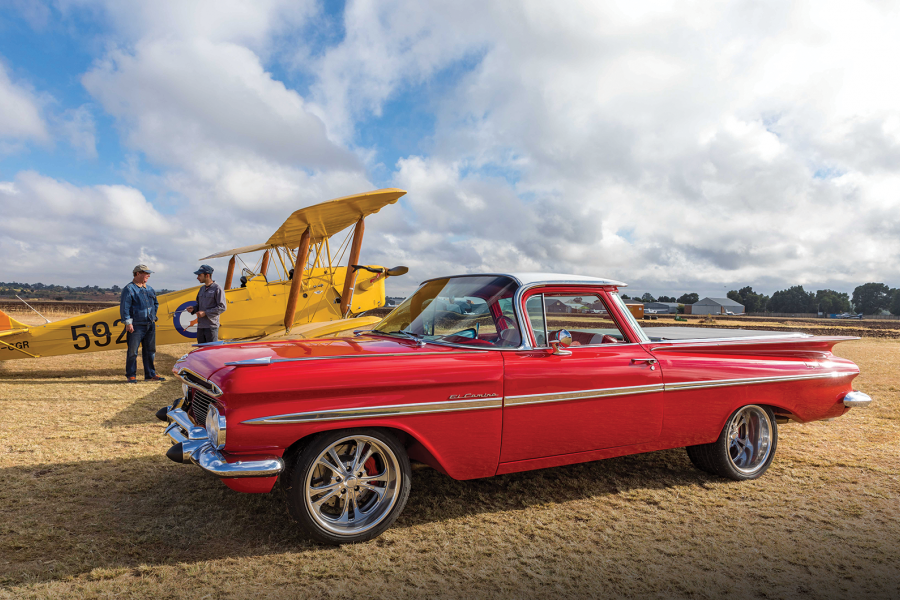So much so that period production-line dyno testers could barely keep the smiles from their faces while running new Cobra Jets through the gears.
At a time when the average insurance cost for a 25-year-old with a fast car could top $1000, it isn’t surprising that some told the odd white lie about just how powerful their products were.
This classic pair shares some aesthetic qualities
Outside of the Yenko-built COPO Camaros (a loophole using Central Office Production Orders allowed top brass to skirt GM’s 400cu in capacity cap), top of the Chevy totem was the 396cu in V8 borrowed from the Corvette.
And if you wanted a soft-top in 1969, the car to have it in was the Camaro SS Indy 500 Pace Car.
Just as the Mustang had burst on to the scene as the pace car for the 1964 race, the Camaro did the honours in its debut year, with Chevrolet offering 88 cars for use throughout the weekend.
Most were for the committee and ferrying VIPs, with three L78-equipped cars to pace the 500-miler.
After downing his milk, AJ Foyt was offered a car but refused on the grounds that it didn’t have air-con or a power roof – a sign of changing tastes even at the top – so Chevy built him one, along with 20 replicas, in June.
The Chevy’s cabin verges on the garish (left); the shifter has an aeronautical feel
When Chevrolet again took over pace-car duties at Indy in 1969 the firm didn’t make the same mistake twice, giving race-winner Mario Andretti a Camaro loaded with mod cons.
GM also recognised the marketing opportunity, and produced a run of 3675 replicas – of which ‘our’ car is one – in addition to the 133 Camaros supplied.
It began life as a Dover White Camaro SS/RS before being modified with a ZL2 ‘Super Scoop’ bonnet painted with striking Hugger Orange stripes, white-painted sills and a white rear panel instead of the usual black.
The paintjob was complemented by 15in Rally wheels and a matching houndstooth interior. Combined with trademark hidden headlamps, it’s a real looker.
The rear-drive Chevrolet has recirculating ball steering and a 129mph top speed
The lion’s share of 1969 pace cars were convertibles – only around 200 hardtops left the Norwood plant – with many opting for the cost-saving ‘Pacesetter Value Package’ that included the L48 350cu in engine.
‘Our’ car benefited from the L35 396, one of around 6000 Camaros so equipped in ’69. With a Rochester Quadrajet carb and 10.25:1 compression, it produced a healthy 325bhp, just 10 shy of its Detroit rival.
On paper there isn’t much to separate these two, but the difference is apparent as soon as you put your foot down.
Floor it in the Camaro and it’ll gladly light up the rear axle; do the same in the Mustang and it feels as if it could rip the tyre from the rim, such is the surfeit of power.
Straight-line pace is where it’s at
The Cobra Jet earned its stripes on the dragstrip, and when assessing the handling of either machine all you can really judge them on is how straight they track under full power.
Steering in both is marked by its vagueness, with a dead spot so wide it makes you wonder what, if anything, connects your hands to the front wheels.
Cornering is best taken at a leisurely pace thanks to nose-heavy weight distribution, particularly in the Camaro, which throughout its life never fully shook a tendency to swap ends.
Both cars come to life out here in the desert on the sort of straight road where you can hammer along without fear of running into the cops.
After a heat-hazy afternoon thundering around in two living legends, it’s hard to think of a better combination than a couple of circa 7-litre V8s and the wind in your hair.
Lighting it up in the Shelby Mustang
Though the popularity of muscle cars didn’t wane too much as the ’60s gave way to the ’70s, changing tastes had transformed the concept from out-and-out high-power street machines to something more akin to the grand tourers of Europe.
With every horsepower lost and every pound gained something of the dream died as well.
However, there’s a happy medium to be found in most things, and when it comes to Detroit iron few cars match either the GT500 or Camaro SS 396.
Today, just as in period, they tread the tightrope between tyre-shredding performance and the comfort that comes with power steering, air-con and assisted brakes.
Two icons of the muscle-car genre
Which you choose is a decision that has probably already been made for most Americans; the Ford or Chevy question is like asking a Glaswegian whether they’re green or blue.
But as an outsider, free from any predilections, I’d opt for the Camaro: not only is the organic Coke-bottle styling a joy to look at, but it’s easier to appreciate the lines when the car isn’t sitting in the shadow of an earlier generation.
Images: James Mann
Factfiles
Chevrolet Camaro SS 396 Indy Pace Car
- Sold/number built 1967-’69/97,227 SSs (3675 ‘Indy Pace Cars’)
- Construction steel monocoque
- Engine all-iron, ohv 6489cc V8, Rochester Quadrajet carburettor
- Max power 325bhp @ 4800rpm
- Max torque 410lb ft @ 3200rpm
- Transmission three/four-speed manual or M40 Turbo Hydra-Matic three-speed auto, RWD
- Suspension: front independent, by unequal-length wishbones, coil springs, anti-roll bar rear live axle, leaf springs; telescopic dampers f/r
- Steering recirculating ball
- Brakes discs front, drums rear, with servo
- Length 15ft 6in (4724mm)
- Width 6ft 2in (1880mm)
- Height 4ft 3in (1293mm)
- Wheelbase 9ft (2743mm)
- Weight 3269lb (1482kg)
- 0-60mph 6.9 secs
- Top speed 129mph
- Mpg 13
- Price new $2940
- Price now $150,000*
Shelby GT500 Cobra Jet
- Sold/number built 1967-’70/4950 (428, 428 Cobra Jet, 428 King of the Road)
- Construction steel monocoque, glassfibre bonnet and wings
- Engine all-iron, ohv 7010cc V8, four-barrel Holley 735cfm carburettor
- Max power 335bhp @ 5600rpm
- Max torque 440lb ft @ 3400rpm
- Transmission four-speed manual or C6 automatic, RWD
- Suspension: front independent, by unequal-length wishbones, coil springs, anti-roll bar rear live axle, semi-elliptic leaf springs; telescopic dampers f/r
- Steering recirculating ball
- Brakes discs front, drums rear
- Length 15ft 6in (4724mm)
- Width 5ft 11¼in (1811mm)
- Height 4ft 4in (1316mm)
- Wheelbase 9ft (2743mm)
- Weight 3939lb (1787kg)
- 0-60mph 6 secs
- Top speed 131mph
- Mpg 12
- Price new $5027
- Price now $250,000*
*Prices correct at date of original publication
READ MORE
Buick’s land yacht: reappraising the ’71-’73 Riviera
Buyer’s guide: Chevrolet Corvette C4
Transatlantic tussle: Chevrolet Corvette vs Jaguar E-type
MG Rover’s Mustang muscle
Greg MacLeman
Greg MacLeman is a contributor to and former Features Editor of Classic & Sports Car, and drives a restored and uprated 1974 Triumph 2500TC
